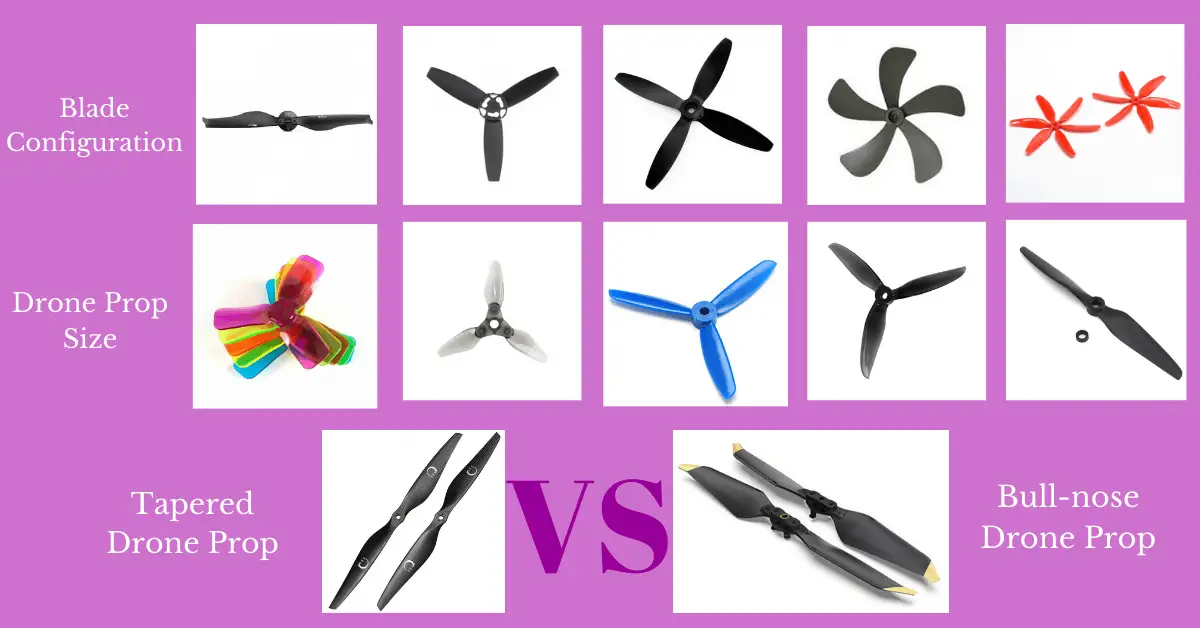There’s no denying that without drone propellers, our drones would not have much use. Drone propeller designs have been continuously improving little by little in order to create the most effective and efficient system.
The goal is a system which will allow a drone to fly at incredible speeds, while flying for incredibly long periods of time, and without making a single sound, faster, longer, and quieter than we’ve ever thought possible.
What are drone propellers anyway?
Drone propellers are a replaceable part of a drone that generate airflow by rapidly spinning which acts as a propulsion system that creates lift and enables a drone to fly. Changing the speed of specific propellers enables it to ascend, descend, hover in place and it also affects the drone’s yaw, pitch and roll. This airflow creates pressure differences between the top side and underneath the blades. Since air in areas of high pressure moves towards areas of low pressure, this generates lift.
In this article, we’ll be discussing how these propellers work, how to choose propellers for a drone, the types of drone propellers, drone propeller pitch, size, material and more…
This post is meant for those who are building their drones and choosing propellers, those who have bought a drone and want to improve the performance by swapping out the stock propellers for better ones, and for those simply interested in how drones function.
How Does A Drone Propeller Work?
Understanding how a drone propeller works is actually fairly simple. For those who find it hard to comprehend, we’ll try our best to help you out.
There are four forces in flight. These include thrust, drag, weight and lift. Thrust, which moves an aircraft in the direction of the motion, works against drag which opposes the direction of motion.
Weight counteracts the effect of lift due to gravity. When these forces are all balanced, the aircraft is capable of flying at a balanced level.
Drone propellers also influence the direction a drone can fly in. This affects the drone’s yaw, pitch and roll. Here is an image showing what we mean:
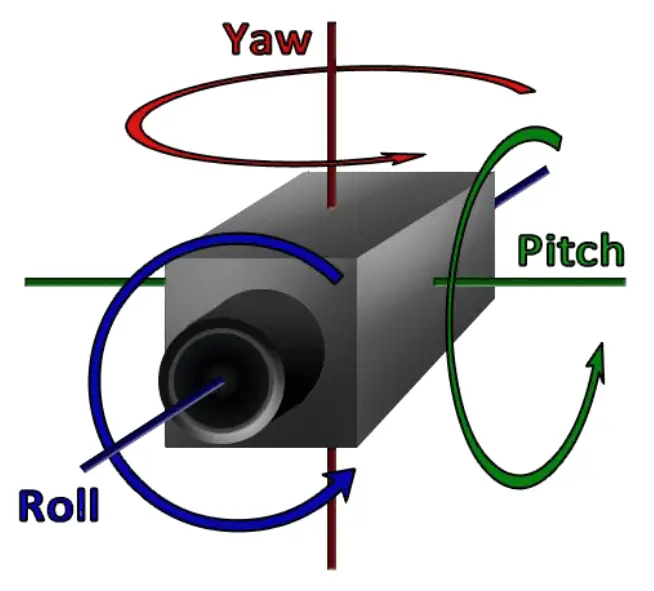
How do fixed-wing drones work?
For fixed-wing drones, we’ll use airplane wings to aid us in explaining how they work. The faster the plane moves, the more air flows across the wing. This speed creates high and low pressure respectively under and above the wing.
Since a plane’s wings are angled in such a way that they attempt to grab the airflow and use it to enable the plane to take off, this creates higher pressure underneath the wing the faster the plane flies.
To explain how this works, here is a quote from NASA’s PDF on the principles of flight:
In general, the wing’s upper surface is curved so that the air rushing over the top of the wing speeds up and stretches out, which decreases the air pressure above the wing. In contrast, the air flowing below the wing moves in a straighter line, thus its speed and pressure remain about the same.
Source
Lift is created as high pressure always moves toward low pressure, therefore the air underneath the wing lifts towards the top. The faster the plane goes, the more lift is generated.
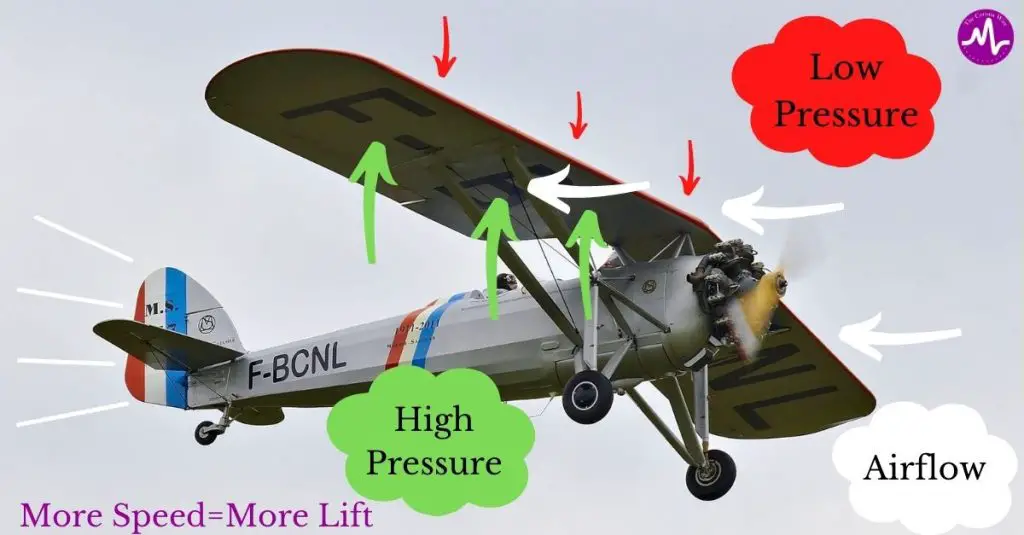
Fixed-wing drones are much more efficient due to their gliding capabilities as they rely on wings instead of multiple props. Their wings are like very large propellers with a lot of surface area. Fixed-wing vertical takeoff and landing (VTOL) drones benefit from both wings and props.
We have a full post on the different types of drones where we dive into more detail on all the different types of drones there are, we talk about the alternative fuel methods and we include some cool examples of popular drones available on the market today including military drones. Feel free to check out our full post:
Related Post: What Types Of Drones Are There? Every Type Of Drone Explained In Detail
How do multi-rotor drone propellers work?
Since drone propellers on multi and single rotor drones are basically baby wings spinning in a circle, they have the same effect leading to a difference in air pressure between the top and bottom sides of each individual blade, which in effect creates lift. The faster these baby wings spin, the more lift is generated.
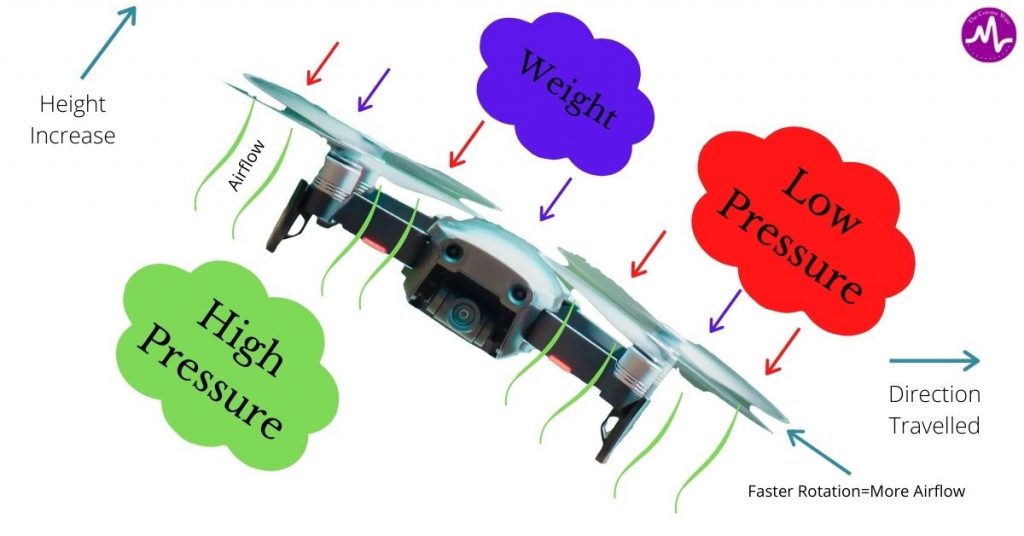
As a quick recap, the pressure is lower on top of the blade than underneath. This is due to the design of the blade and the speed it rotates at. Since the air in the high-pressure zone moves towards the low-pressure zone, it essentially pushes the drone upwards.
When the lift generated exceeds the force of gravity (weight of the unmanned aerial aircraft), the drone takes flight.
The drone’s battery provides power to the motor which uses the rotor to turn the propeller. The drone’s flight controller controls the speed of the motor, which makes the rotor turn through the Electronic Speed Controller (ESC).
Take note that each propeller on a drone has its individual ESC and rotor.
If you’re confused about what these terms and components mean, we have a full post explaining what each does and how they work:
Related Post: What Are Drones Made Of? Detailed Guide To Drone Anatomy [Consumer+Commercial]
Propulsion, which enables the drone to move in any direction, is achieved by changing the speed of specific propellers creating an imbalance and in turn propelling the drone in a given direction.
Drone propeller direction
The direction the propellers rotate is another important factor to pay attention to. Here is a diagram to illustrate which direction the different multi-rotor drones’ propellers rotate below:
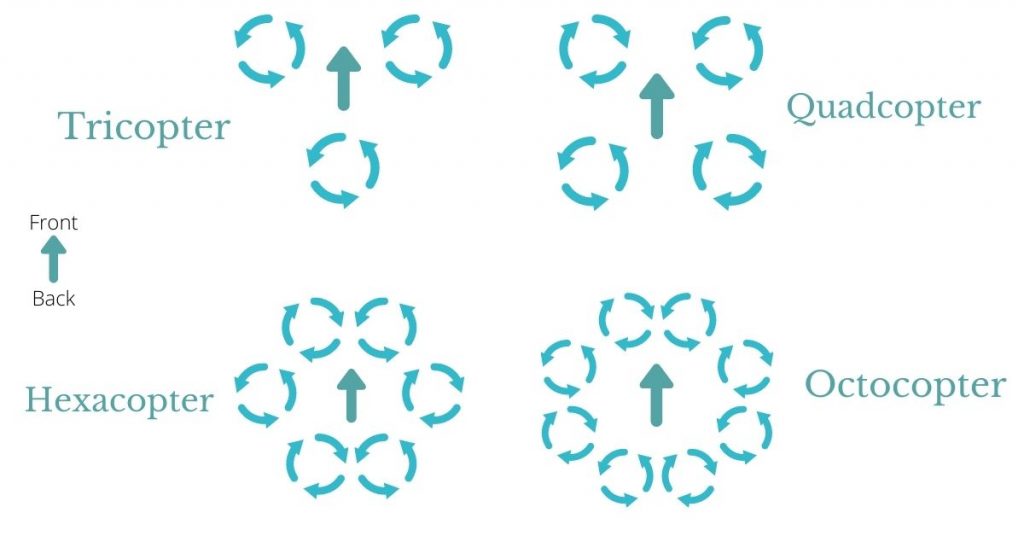
When the propellers accelerate, torque is generated. Torque is caused by Newton’s third law which states that for every action, there is an equal and opposite reaction.
Since the propellers need to push through the air in order to rotate, that air causes resistance and therefore this causes a counter-rotation on the actual body of the drone. To put it simply, if all of the propellers spun in the same direction, it would simply cause the whole drone itself to spin in the same direction as the propellers.
This is why helicopters have tail rotors. The tail rotor counteracts the force generated by the main rotor. Some helicopters also use contrarotating propellers which are a set of two main propellers that rotate in opposite directions.
Each set of propellers that spins in opposite directions cancels out allowing the body of the drone to stay in a fixed position.
These are commonly called clockwise (R) and counterclockwise (C). These numbers will generally be found after the sizing numbers marked on the blade.
Drone Propeller Types
There are several different types of drone propellers that can each be classified into different categories.
These categories include tapered tip propellers, bullnose propellers, folding propellers and the different blade configurations for each of these categories.
What is a tapered propeller?
Tapered propellers are the stock propellers drones usually come with when purchased. They are commonly referred to as ‘regular’ propellers.
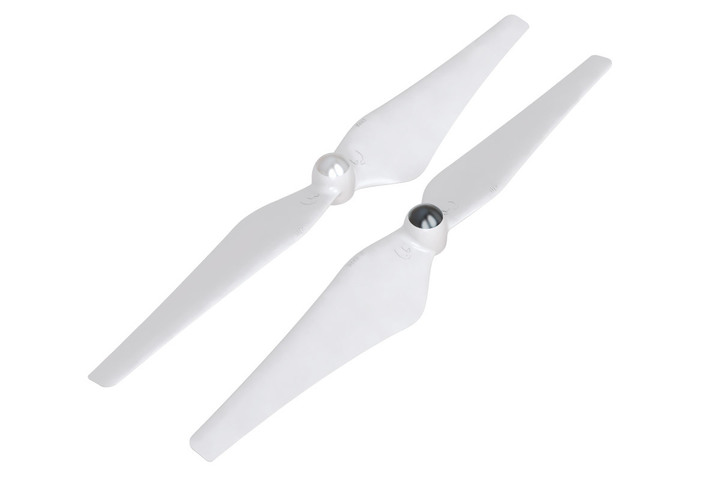
These propellers have more pronounced tips and are thinner than bull-nose propellers.
Their smaller surface areas means that they have to rotate at greater RPMs to create enough thrust for the drone to operate.
Overall, these props consume less power than bull-nose propellers.
These props are more suited to those who want to prioritise stability for things such as aerial photography or videography.
What is a bull-nose propeller?
Bull-nose propellers are a recent addition to the drone industry and are rapidly being implemented in new drone designs by industry leaders around the globe.
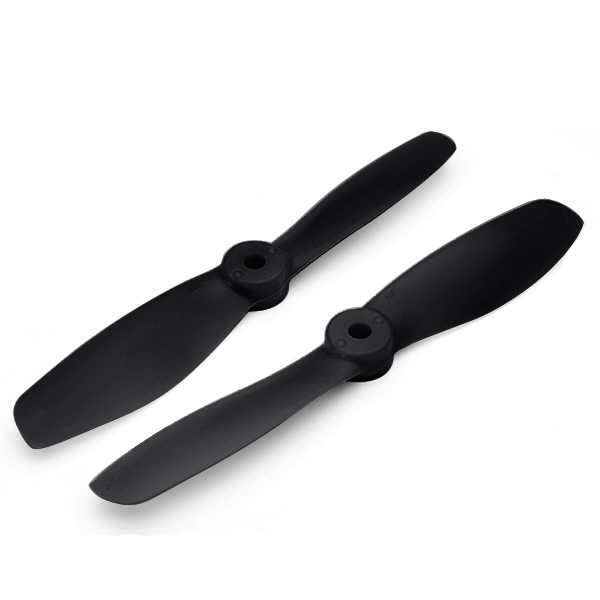
These props have tips that are thicker than tapered propellers and are blunter. They have larger surface areas thus creating more thrust, but weigh more than tapered props and demand more energy from the battery reducing flight times.
However, they are smaller in length than tapered props.
These propellers are primarily used for racing drones and by those willing to sacrifice flight time for speed.
Folding propellers
Folding drone propellers are becoming very common in consumer and commercial drones. This is due to the fact that many consumers and commercial drone pilots travel with their drones on vacation and therefore require a small and portable aerial camera that can easily fold up to take up less space.
If you’d like to discover everything you’ll need to know on consumer drones, we have a full post here:
Related Post: What Are Consumer Drones? [Types, Uses, Sizes, Materials And Much More]
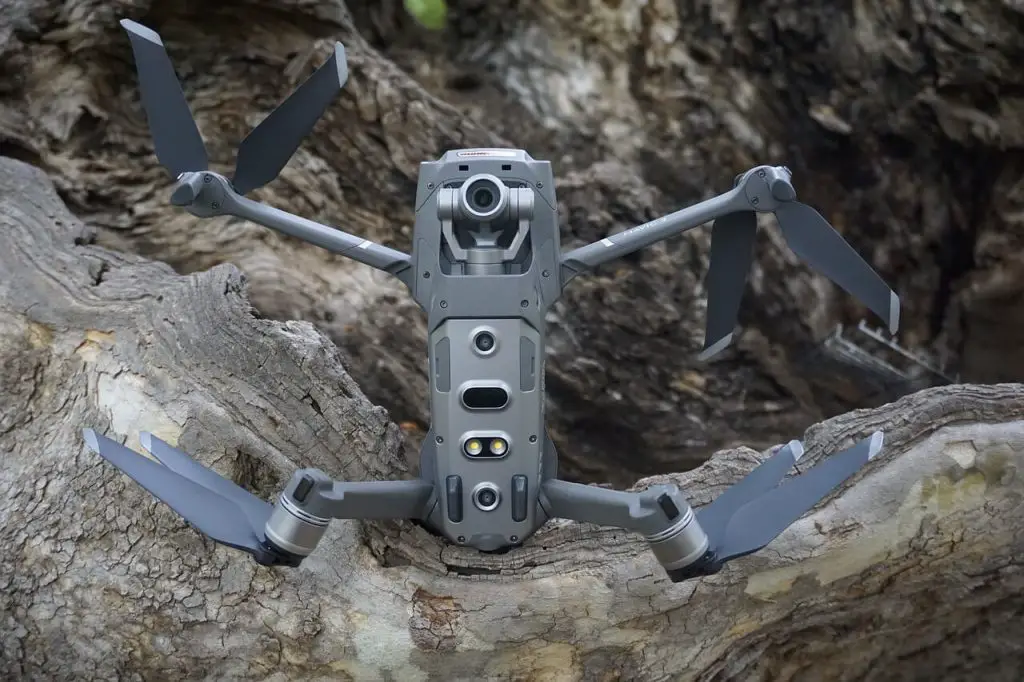
Making drones portable has become a primary factor when designing and manufacturing drones for industry leaders and drone hobbyists.
However, you may be wondering if these types of drone propellers affect the drone’s flight performance. In most cases, they don’t. They may even have a slight benefit in comparison to fixed drone propellers.
When the throttle is pushed to high with a drone that has fixed props, it can create a shock as all the motor torque gets transferred to the propellers which can slightly impact the stability of the drone including the footage being taken by the camera.
Folding props are better at absorbing this shock before all the torque is applied to the propellers.
If you’re worried about the propellers folding during flight, this will not happen very often. The worst that could happen is the propellers fold a little bit which will decrease the length of the propellers and you’ll most likely lose a little bit of efficiency.
Blade configuration (number of blades)
The most common number of blades you’ve probably seen is either the two blade of three blade propeller that are both used for many drones today. However, you also may have seen a four blade and maybe even a five blade prop.
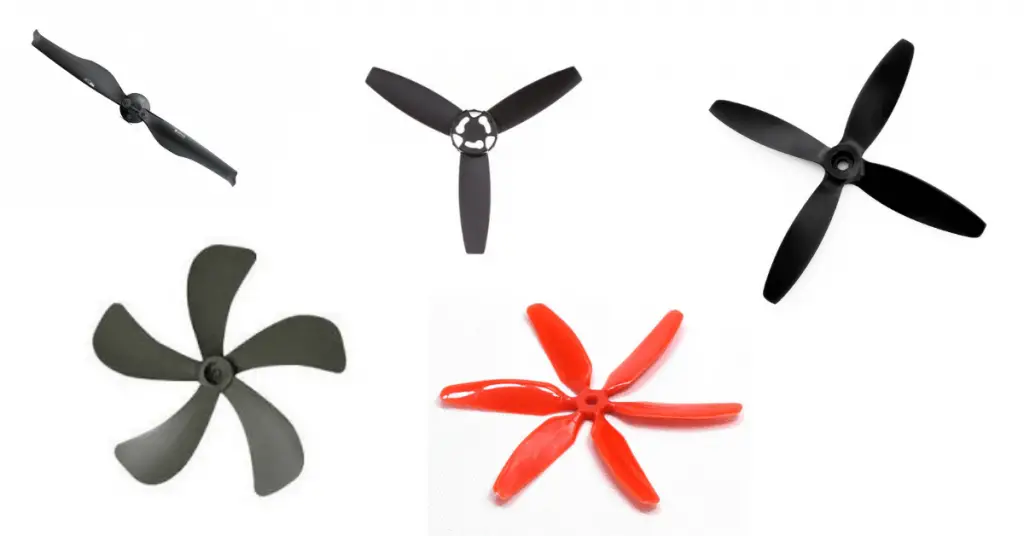
These propellers range from two blades up to six blades. However, you may be wondering why you don’t often see six blade propellers on drones today.
The reason is that you lose efficiency the more blades you have on a propeller. You would be correct thinking that adding blades increases the amount of thrust generated on each rotation. This is correct as more blades mean increased surface area per rotation.
However, this is at the cost of efficiency as they demand higher power and therefore battery consumption to complete a rotation.
Take note that using a propeller with more blades may increase the overall stability of the drone depending on factors such as the power of your drone’s motor. This however will most likely drastically decrease the overall flight time of your drone.
This will depend on your exact drone, but it is quite common to see the results stated above.
Drone Propeller Pitch
The pitch of a drone propeller is the angle of the blades on the prop.
You may be wondering, why are drone propellers angled?
Pitch is very important as your drone’s propellers need to push air downwards in order to gain altitude.
If the pitch of each blade is too low, meaning the blade is flat for example, then the propeller will be able to rotate at a very high RPM but will not generate as much lift as there will be less overall thrust. This propeller will respond quickly to inputs and use less power.
However, this will only be efficient at low speeds.
If the pitch of each blade is too high, meaning the blade is much steeper angled, then the propeller will rotate at a much lower RPM but will generate a lot more lift as there will be much more thrust. This prop will only be efficient of the drone is moving at high speeds.
However, it will respond slowly to inputs and use more overall power.
If you’re trying to choose how much pitch you want for your specific drone, we’ll get into this in the ‘How to choose propellers for a drone’ section below.
Done Propeller Size
The size of the propeller has one of the highest influences on the performance of a drone. This can influence things such as the responsiveness and the thrust generated on each completed rotation.
Below we’ll go into how the weight, length and bore influence a drone’s performance and we’ve also included a brief comparison between large and small drone props.
Weight
Weight plays a big role in determining how long and how fast a drone can fly. Many parts on a drone are carefully chosen while keeping the weight of these parts to mind. Drone propellers are no exception.
Finding a lightweight, efficient, effective and durable drone prop for a drone is what is needed for any drone to reach its full potential.
This however ties directly into the material used for the drone which we will be discussing below. Therefore, this discussion will continue in that section.
Length
The length of the propeller (diameter) is another factor that plays a major role in a drone’s performance. This measurement is usually measured in inches.
This is the length between one tip of the prop to the diagonal tip of the prop on the other end.
The longer the propeller, the more thrust it can potentially create while maintaining the same speed. However, it will require more torque in order to do so. This will also depend on the width of the prop (amount of surface area) and its pitch.
Finding the right balance is important and will vary from drone to drone. We’ll discuss this further down below.
What Are Drone Propellers Made Of?
Drone propellers are usually made of a plastic compound. However, more expensive drones often come with propellers made of carbon fiber. The material used for the propellers will affect the drone’s performance and durability.
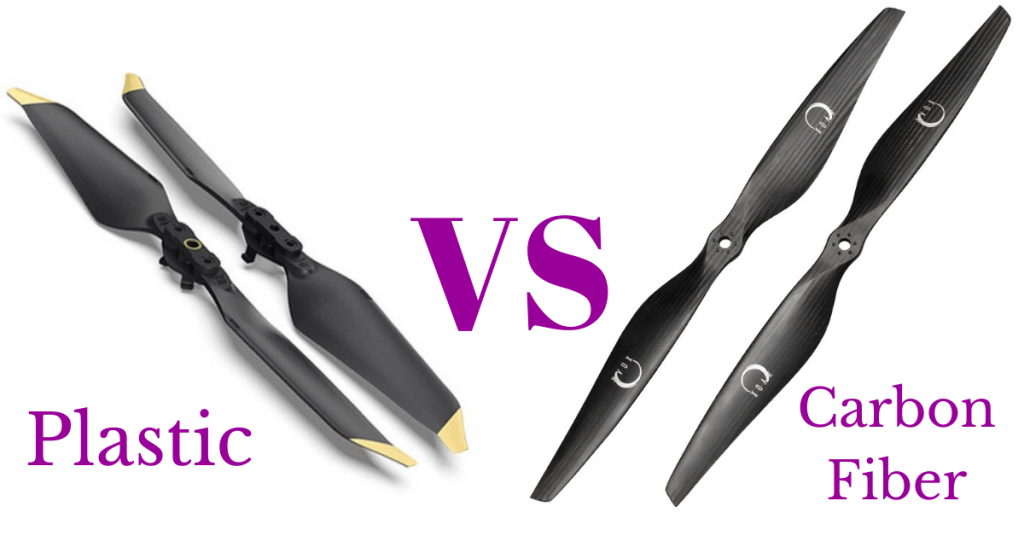
Plastic drone propellers are widely used as they are cheap and flexible. This is advantageous as they are more likely to last longer even after a few crashes as they have the potential to slightly bend. This can save you a lot of money in the long run.
However, these drones tend to cause vibration while they are rotating which can affect the stability and overall performance of your drone.
Carbon fiber drone propellers are commonly found being used in more expensive models as they are stronger, stiffer and lighter making them more durable. They produce much less vibration and they sound much quieter during flight.
However, their strength can also become a weakness and the impact of a crash can have much more of a strain on the motor as the propeller does not easily break.
What about wooden drone propellers?
Wooden propellers are not that common when it comes to drones. These propellers are going to have the same problems as carbon fiber ones as they are not very flexible and are often very expensive.
These props may make your drone sound a little different (deeper sounds) and could slightly impact your drone’s stability in a negative way.
Other than that, they sure do look awesome!
How To Choose Propellers For A Drone
Choosing propellers for a drone can seem like a daunting task considering you need to know the drone you plan on attaching the propeller to. That is why we have done our best to explain it in a clear and simple way.
All of these factors have already been addressed, however, this will be tailored to those who plan on adding new propellers to a drone.
Here are the factors you’ll need to take into consideration when choosing new propellers:
- Size
- Pitch
- Blade Configuration
- Material
How to choose the size of a drone propeller for a drone
Things you’ll need to think about when choosing the size of a drone propeller are the weight, length, surface area and the bore.
The weight of the propeller is important as any added weight to a drone can impact its performance. This will be much more important to first-person view (FPV) drone racers but is still very important for anyone else.
Make sure you figure out the payload capacity of your drone that is usually provided to you by the manufacturer in order to determine whether your drone can handle any added weight.
The length of the drone prop is equally as important as the weight. Not all drone frames can handle certain lengths of drone propellers. In order to determine the maximum length you can use, you’ll need to carry out a rather simple equation.
What you’ll need to do is to take the length and the width of your quadcopter’s frame size and then divide that number by two. Make sure you pick a drone propeller that has a length that is slightly smaller than that number in order to be sure there are no problems.
Take note that manufacturers provide rounded drone measurements that are not always completely accurate.
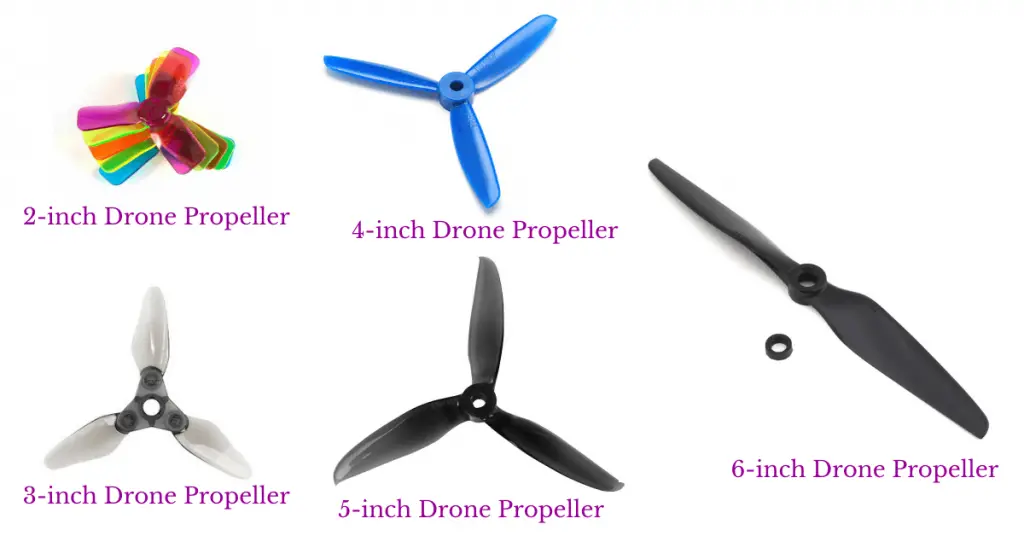
The surface area is also an important factor.
Very thin blades will need to rotate at greater speeds and will therefore require large batteries to operate. Finding a tapered propeller that has a good size proportion in conjunction with the drone’s battery capacity, motor and overall weight is essential.
The bore is the last factor you’ll need to take into consideration. The bore is the size of the hole in the center of the propeller. Matching that size to the size of the shaft of the rotor is important.
There are adapters that can downsize the bore of a drone propeller so that they can fit perfectly on your drone. Some drone propellers may also have screws that secure them to the motor.
Understanding the size of the drone you own is also very important as this can play a role in how the prop you choose affects the drone’s performance.
We have a full post on drone sizing where we go into not only the various sizes drones come in, but we also talk about whether the size of a drone matters, consumer, commercial and military drone sizes, how to measure the frame size of a drone and much more:
Related Post: Drone Sizes Explained: Consumer, Commercial And Military Drone Sizes
How to choose the pitch of a drone propeller for a drone
The pitch of a drone propeller is also important when deciding which to get for your drone. After you’ve finished with the sizing of the propeller and you know the general weight, length, surface area and bore you are looking for, it will be time to decide how much of an angle you’ll want.
We’ve already covered most of what you’ll need to know in the section above, so now we can summarise.
In essence, the higher the angle/pitch of your drone, the faster it will go. However, drone props with a higher pitch consumer much more battery power and require more rotational speed than props with lower pitch.
To choose the angle at which you want your drone’s propellers to be at, you’ll first need to know what you intend to use your drone for.
How to choose the blade configuration of a drone propeller for a drone
The most efficient propeller is actually one that has the least amount of blades (single bladed).
Adding more blades increases thrust and power without the need for adding more propellers or increasing the size of these propellers. However, this can have downsides and there are actual restrictions to what blade configuration you choose depending on your drone’s motor.
Over the last few years, drone technology has been rapidly evolving for many different uses. One component that is continuously evolving is the motor used in drones.
These motors have been able to gain in power and efficiency allowing for the possibility of increasing the size and the amount of blades on a drone.
Contrary to what you may think, increasing the amount of blades on a propeller is actually not as efficient as simply increasing the size of the whole propeller. Therefore, increasing the amount of blades will increase the amount of thrust generated but at a cost.
This cost is flight time due to an increased use of battery power and your drone will be less responsive to your inputs.
When choosing your propeller, you’ll need to make sure that the number of blades you choose matches the power output from your drone’s motor as otherwise this could cause problems for your drone.
If you have a motor designed for a specific prop size and you decide to put a prop that is much smaller, then this will result is very high RPM and it will not generate as much thrust.
This can severely damage your drone’s motor.
It is also essential that you match both the size of the propeller with the amount of blades it has. Take note that five inch propellers which are the most common size for a propeller generally run best with a three blade configuration.
How to choose the material of a drone propeller for a drone
The three main things the material of a drone propeller can affect are the efficiency, the durability and the sound the propeller makes.
Drones today are most often sold with polycarbonate (PC), a type of plastic, as stock props. They use this material as it’s relatively stiff but can easily bend.
This can prolong the lifespan of these props and if you crash your drone, they can absorb most of the impact and can even be bent back in shape depending on the severity of the crash.
These props are also quite cheap in comparison to alternatives but are usually quite loud when in use. They are also relatively lightweight.
Another material has also risen in popularity however, that material being Carbon fiber. Carbon fiber is a stiff material that is most commonly found on high-end drones.
These types of props are much more expensive and make your drone much quieter than a prop made from thermoplastics.
These props provide excellent stability and are very lightweight. Their capability of reducing the amount of vibrations they generate on every rotation also allows them to generate lift a lot more efficiently than PC props.
However, their rigidity can cause several downsides. Depending on the force on impact during a crash, they could potentially have a difficult time breaking and therefore damage your motor as they will want to continue spinning.
The entire force of the impact would therefore go to the motor and damage your drone’s hardware.
If your crash is more severe, they could break. This could continue depending on your skill and you’ll therefore be spending quite a lot of money replacing them.
Choosing the material will depend on your drone piloting skills and the way you’ll be using your drone.
How Much Do Drone Propellers Cost?
Each set of drone propellers which includes a set of counterclockwise and clockwise propellers costs on average between $20 and $50. The supplier you buy from and the quality of the propeller including the material, blade configuration, pitch, length and so on will influence the price of the drone propeller.
How And When Should You Replace A Drone’s Propellers?
Drone propellers are the most common part of a drone to break. This is because they are often the first point of impact on a drone when it crashes. Below we’ll talk about how to replace a conventional drone’s propellers and when this should be done.
The material you choose for your drone props and the amount of times you think you will crash your drone are the two factors you’ll need to look at to determine this.
Make sure you carefully inspect a drone’s propellers after a crash!
Now, when should you replace a drone’s propellers?
You should replace a drone’s propellers if you see any cracks, deformations or discolouring in the blades. If your drone has undergone over 400 flight hours, it may be time to change them. If you notice any change in the amount of noise or the sounds it makes while flying, then you should think about replacing them.
How do you replace a drone’s propellers?
Here is a video showing how to remove the propellers off of two different kinds of drones, including some useful tips to help you out:
How Fast Do Drone Propellers Spin?
The motors on drones have a speed range of between 5,000-40,000 revolutions per minute (RPM) depending on the type of drone and the type of propeller being used.
However, this hover speed is not a fixed value. It may change at different elevations due to varied air density, different amounts of temperatures and even humidity.
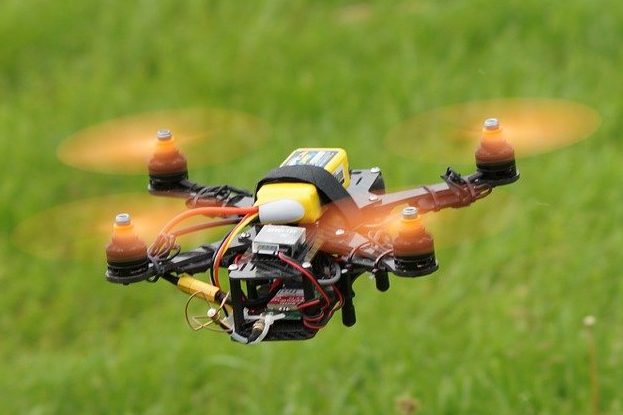
One of the main factors that influences how fast a propeller rotates is the propeller itself. This includes what we talked about above such as the type of propeller being used, the number of blades on it, the surface area, pitch and other factors as well.
If you want to find out have much thrust a propeller will produce, you’ll have to examine the motor thrust data which is provided by most drone manufacturers.
Motors are a very important factor that determines how fast a drone prop can rotate.
Take note that more often than not, the bench tests that are carried out by drone manufacturers are not completely accurate and external factors such as weather can influence this number. A good rule of thumb is to expect around 10% less thrust generated by the drone’s propellers.
What Do Drone Propeller Numbers Mean?
If you’ve ever examined a drone’s propeller closely, you may have come across a series of three numbers. If you’ve wondered what they mean, we’ve got you covered.
It’s actually quite simple and straightforward. These numbers represent the size (length), pitch, and blade configuration of the prop.
Take note that the size and pitch are measured in inches.
For example, let’s take 5 x 3.9 x 4. This means that the prop is 5 inches in length, has a pitch of 3.9 and has 4 blades in total.
Size (in inches) X pitch (in inches) X number of blades
If you see the letters BN, this means that it’s a bull-nose propeller.
You also might see some other letters such as R and C which stand respectively for clockwise and counter clockwise which we mentioned above. This is just telling you the direction the propeller spins at.
Examples Of Popular Drone Propellers
Here is a short list of several popular drone propellers:
| Propeller Model | Length | Pitch | Blade Configuration |
| DALPROP T6040C Cyclone | 152mm (6 inch) | 102mm (4 inch) | 3 blades |
| HQ Prop 5040 4-blade | 127mm (5 inch) | 102mm (4 inch) | 4 blades |
| DALPROP T5045C Pro | 127mm (5 inch) | 114mm (4.5 inch) | 3 blades |
Conclusion
Drone propellers are one of the best ways to improve the efficiency and performance of your drone, including how it looks. There are only a few common materials used to make these propellers but we are sure this will increase as time goes on and as people continue to innovate.
Drone propellers are the one part you will probably need to replace most often so try not to get too attached to whichever you pick!
